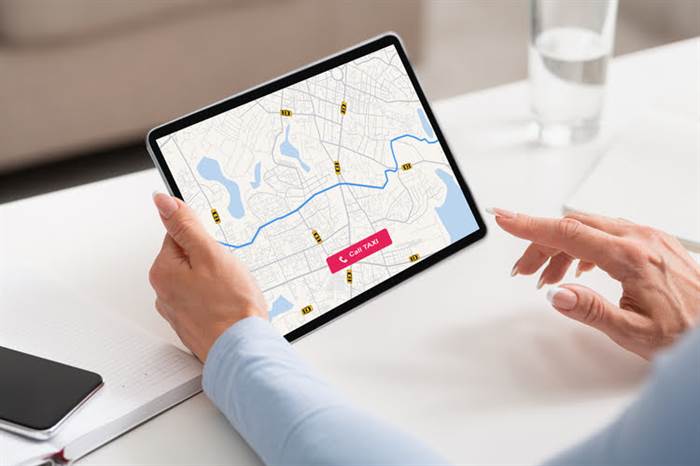Which ones are the main applications depends on the business and the industry it operates in. Most companies can benefit from supply chain management, logistics, and financial applications to help them streamline their operations and expenses. It implemented a system that integrated its thousands of applications, standardized processes, and restructured warehouse management systems—breaking down silos for seamless, integrated coordination of work. Integrating and automating business processes eliminates redundancies and improves accuracy and productivity. In addition, departments with interconnected processes can synchronize work to achieve faster and better outcomes. An ERP software system can also integrate planning, purchasing inventory, sales, marketing, finance, human resources, and more.
- Smartphones, tablets, and even smart watches all have the power to collect, store, access, and manage huge amounts of data.
- It’s designed for large businesses and offers a fourteen-day free trial with the Fioro user experience, role-based guided tours, capabilities and workflows.
- This is a challenge for maxima as the wrong decision and ignorance of the top management caused harm to the company.
- Accurate and complete reporting help companies adequately plan, budget, forecast, and communicate the state of operations to the organization and interested parties, such as shareholders.
- You also manage capital asset projects, planning, budgeting and estimations and obtain resource availability and their performance metrics for project implementation.
- The system has capabilities such as self-service reporting, document management and approval workflows.
- It uses a hybrid cloud approach consisting of a private solution cloud that is a tier 1 SOC and AICPA compliant data center, and a public cloud that is used for data redundancy.
Log full machinery and equipment history at all clients’ sites and search for available repair parts in stock. Merge data from various sources, including BI, social, transactions and more with role-based dashboards. The dashboard infolets showcase KPI summaries in accordance enterprise information systems example with transaction and process statuses while analyzing cash positions and cash requirement predictions. Manage integrated info tiles into work areas to supervise operations, track transaction progress and detect issues and exceptions that may need addressing.
Benefits of Enterprise Resource Planning
This module or standalone accounting software can facilitate payroll, budgeting, billing and banking operations. It can conduct cost analyses to better manage cash flow and forecast future growth. Using an ERP product to perform these functions can reduce human error and help cut costs. Enterprise technologies span functional areas from accounting to marketing to security — and may be used by both internal and external teams. The table below includes a summary of the common types of enterprise technology. Increased agility, responsiveness, and security are some of the aims of enterprise technology — or the systems, platforms, and tools that are shared across an organization.

Enterprise Information System (EIS) Functions[4] Enterprise information systems have both operational (transaction-processing) and informational (data storage, retrieval, and reporting) functions. The main objectives of collaboration systems are to facilitate communication and teamwork among the members of an organization and across organizations. One type of collaboration system, known as a workflow system, is used to route relevant documents automatically to all appropriate individuals for their contributions. This presents an opportunity to select and customize CRM software based on existing data.
Types of Companies That Can Benefit
Business intelligence apps often include business analysis, data mining and visualization tools with a robust infrastructure. Companies can adjust the ERP system to respond to the needs of different industries such as healthcare, retail, finance, law, architecture, hospitality, etc. Within a given sector, it is possible to customize ERP to create account payables, reports and timesheets to facilitate routine tasks in the organization. Thanks to advanced data analytics tools, it is possible to optimize resource allocation and energy consumption. Pipedrive is a CRM enhanced with rich features to improve work of marketers and business development managers.
Also, menial and manual tasks are eliminated, allowing employees to allocate their time to more meaningful work. Some businesses benefit from enhanced real-time data reporting from a single source system. Accurate and complete reporting help companies adequately plan, budget, forecast, and communicate the state of operations to the organization and interested parties, such as shareholders. Business intelligence apps are aimed at data analysis and the provision of accurate information for effective decision-making. This practice helps companies reduce expenses, learn what works best, and reveal the actions that should be replaced or eliminated.
Components of information systems
With ERP software, each department still has its system, but all of the systems can be accessed through one application with one interface. The supply chain management (SCM) system is software that helps streamline all these processes. It makes the routine work of suppliers, manufacturers, logistics managers and retailers easier. For all the parties, it helps in tracking and communicating with each other, establishing better procedures and delivering ready-made products to the customer more quickly. Analytical CRM creates efficient processes to respond to customer desires. It provides thorough data analytics, giving organizations insights into how to build stronger customer relations and improve the quality of service.
Enterprise application software can handle large amounts of data with a high level of precision. Let’s look at the most popular apps for businesses that implement this type of software. For optimization of all the processes, they enjoy great benefits from using CRM. Organizations use CRM for gathering details of their clientele, decrease the time employees spend on routine tasks, grow their businesses. CPM-system is a set of methodologies, industry models, metrics, processes for monitoring and managing performance of the institution. The idea of CPM is an extension of the concept of information-analytical complex, complementing the reporting and analysis functions with the consolidation, budgeting, strategic planning and forecasting.
ERP Sidebar
The first thing that may come to mind is the internet, and you’re correct. Open-source software invites collaboration—users can modify its code to change how it operates. Closed-source software is proprietary, meaning the owner restricts the user’s ability to modify it. Information systems can improve nearly any business operation, but here are a few valuable ways you can put them to work. As cloud-based solutions have grown in popularity in recent years, the traditional ERP industry leaders have seen challenges from upstarts such as Bizowie and Workwise.

Operational CRM contacts clients, stores all the necessary information on them, helps companies during the entire customer lifecycle. With this CRM, companies can optimize the performance of various units. Elevate Your Business with Our Software Boost teamwork, enhance efficiency, and maintain your competitive edge with our expertise in Enterprise software development. Maryia is an avid technology enthusiast who constantly follows the developments in the industry and enjoys shedding light on the hottest IT topics. She combines her own in-depth research with the direct input from seasoned engineers to create insightful and empowering content. Manage equipped BI tools that mix data with visual analytics to create actionable business insights.
components of information systems
CRM systems are their own standalone software, but robust ERP systems come with a CRM built in, eliminating the need for integrations with one streamlined product. In this scenario, a couple of ERP capabilities work together to ensure a company will have the products that their customers want, and ultimately, improve customer satisfaction. As information systems enabled more diverse human activities, they exerted a profound influence over society.

These push out end to end across the entire company throughout finance, procurement, manufacturing and the supply chain. Several levels of data structures are eliminated and therefore material data is made available in real-time. This decreases latency and inaccuracies for understanding the demand and supply. This helps in the status of production, inventory and procurement to be accessible in real-time and for the modern demand signals to be used in planning decisions.
What Is Enterprise Resource Planning (ERP)?
Some companies may also be reluctant to let go of old software that worked well in the past. The key is to prevent ERP projects from being split into smaller projects, which can result in cost overruns. ERP software also provides total visibility, allowing management to access real-time data for decision-making. Then, the hosting company loads the applications onto the server the client is renting, and both parties begin working to integrate the client’s processes and data into the platform. Each type of enterprise software solution focuses on specific goals and offers different functionalities. When deciding on which type of information system to choose, make sure it complies with strategic planning and major goals of your business.
wordpress theme by initheme.com

